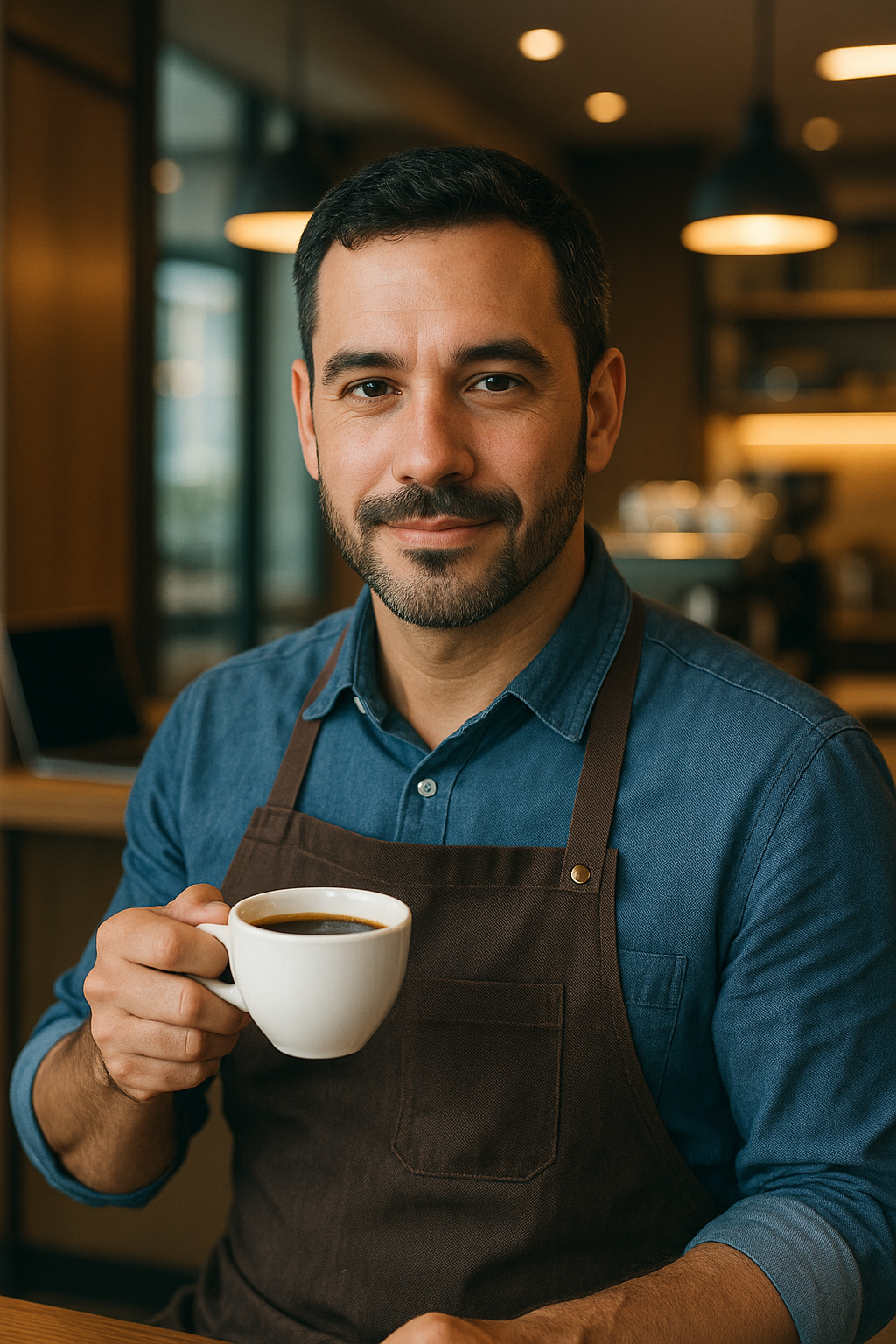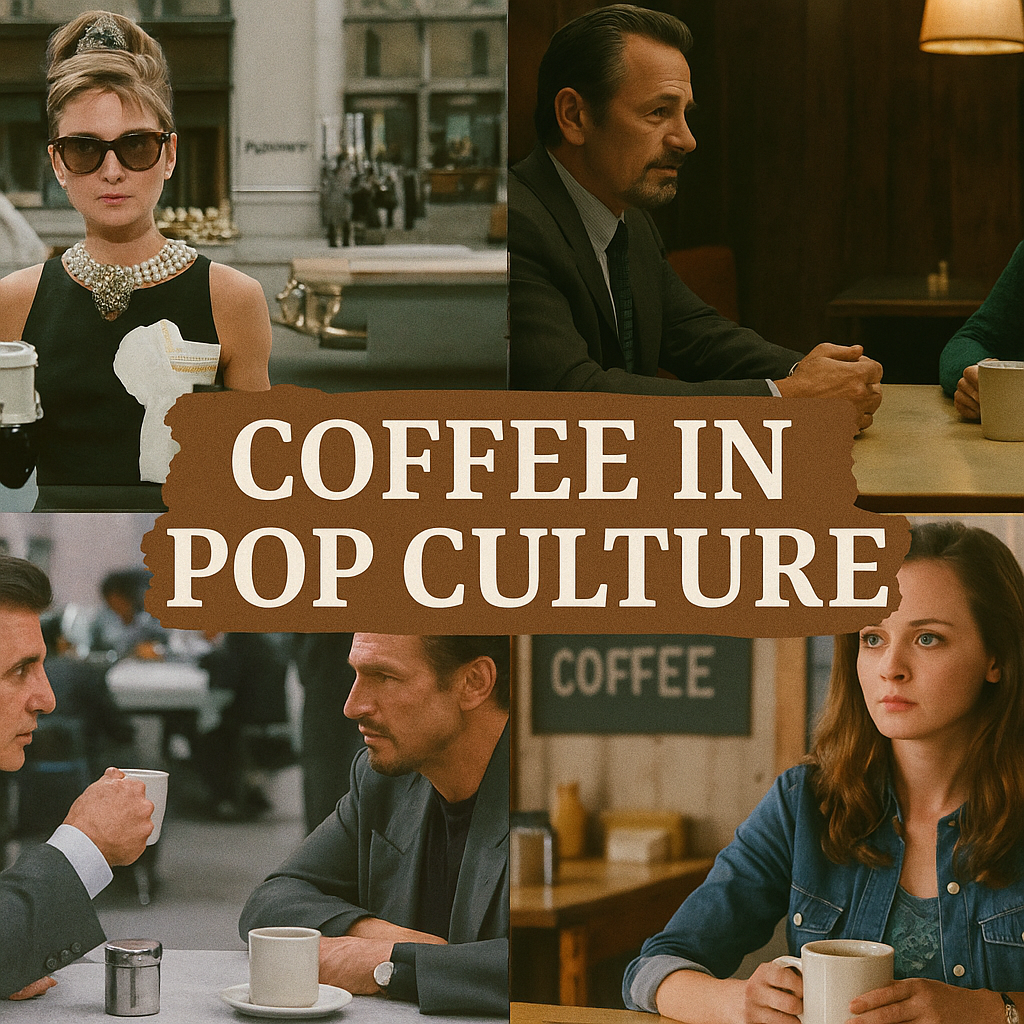Coffee has long been more than just a drink—it’s a cultural symbol, a narrative device, and a source of comfort deeply embedded in the collective imagination.
Whether it’s a dramatic pause in a movie, a ritual in a TV series, or a symbol of introspection in literature, coffee plays a starring role in the stories we tell.
This article explores how coffee is represented in popular culture across film, television, and books, revealing how this humble beverage helps shape characters, define settings, and speak volumes about the human experience.
Coffee as a Cinematic Symbol
Coffee often appears in films not as a plot point but as a symbol of routine, reflection, or connection. It’s used visually and thematically to convey everything from personal intimacy to cultural identity.
Quentin Tarantino and the Coffee Dialogue
Quentin Tarantino frequently uses coffee in his films as part of rich, layered dialogue. In Pulp Fiction, there’s an entire scene where characters discuss the quality of coffee during a tense moment involving body disposal. The juxtaposition of casual coffee talk with criminal activity adds humor and tension, showcasing how everyday rituals ground even the most bizarre circumstances.
Breakfast at Tiffany’s
In the opening scene of Breakfast at Tiffany’s, Audrey Hepburn’s character Holly Golightly walks down a quiet Fifth Avenue with a coffee and croissant in hand, gazing into the Tiffany & Co. window. This moment became an iconic image, symbolizing elegance, loneliness, and aspiration—all captured over a cup of coffee.
Heat (1995): The Coffee Meeting
One of the most legendary scenes in Michael Mann’s Heat features Robert De Niro and Al Pacino facing off across a table over coffee. The scene is quiet, suspenseful, and intimate—two enemies sharing a moment of calm before the inevitable storm. Coffee, here, serves as a neutral ground, allowing both characters to expose their philosophies and values.
Coffee in Television: A Character of Its Own
In television, coffee has become a defining trait for characters and entire shows. Sometimes, it’s almost a character itself—offering continuity and personality to long-running series.
Friends: Central Perk and Social Life
The sitcom Friends popularized the concept of hanging out at a café as part of daily life. Central Perk, with its iconic orange couch and oversized mugs, became a secondary home for the six main characters. Coffee served as both a literal and figurative centerpiece—a place where relationships evolved, confessions were made, and major life events unfolded.
The oversized cups, while not particularly realistic for espresso lovers, became part of the show’s charm and were emulated in real-life coffee shops across the world.
Gilmore Girls: Coffee as Personality
In Gilmore Girls, Lorelai Gilmore’s coffee obsession is legendary. Her character is rarely seen without a mug, and her exaggerated need for caffeine becomes a personality trait that fans adore. Coffee represents her energy, wit, and refusal to conform to traditional roles.
Luke’s Diner, the local café, is more than just a setting—it’s a narrative hub where many of the show’s pivotal conversations take place. The act of ordering coffee is a form of emotional exchange, and the ritual adds continuity across episodes.
Twin Peaks: “Damn Fine Cup of Coffee”
No list would be complete without mentioning Twin Peaks and Agent Dale Cooper’s love for coffee. His repeated praise of the “damn fine cup of coffee” became an instantly quotable catchphrase and symbolized his quirks and sincerity.
Coffee in Twin Peaks is a part of the show’s eerie Americana—it contrasts with the town’s darker undercurrents and enhances the surreal atmosphere.
Coffee in Literature: Depth in a Cup
Writers have long used coffee as a metaphor for introspection, habit, and human connection. In literature, coffee is often found at moments of reflection or during conversations that push the narrative forward.
Jean-Paul Sartre and Existential Cafés
In post-war Europe, cafés were seen as intellectual havens. Jean-Paul Sartre and Simone de Beauvoir were known for spending long hours at Parisian cafés like Les Deux Magots, discussing philosophy and politics. Sartre’s characters often engage in profound dialogues over coffee, using the setting to emphasize existential themes of freedom, absurdity, and alienation.
Haruki Murakami: Coffee and Loneliness
Haruki Murakami, the acclaimed Japanese novelist, often weaves coffee into his stories. His characters prepare it meticulously, drink it alone in silence, and find small moments of clarity through the ritual. Coffee becomes a symbol of solitude, control, and routine in a chaotic world.
In Kafka on the Shore and Norwegian Wood, coffee doesn’t just appear—it becomes part of the emotional texture, offering readers a familiar anchor in surreal or emotionally charged scenes.
The Unbearable Lightness of Being
In Milan Kundera’s The Unbearable Lightness of Being, characters often drink coffee while contemplating life, love, and politics. These moments emphasize the duality of simplicity and depth—how a small, habitual act can be loaded with meaning depending on the emotional state of the character.
Coffee Shops as Cultural Icons
Coffee shops are not just real places—they’ve become mythic symbols in pop culture. They represent creativity, community, and even rebellion.
- In Reality Bites, a 1990s film about post-college ennui, characters hang out in cafés to talk about life and avoid responsibility.
- In Inside Llewyn Davis, a struggling folk singer clings to his coffee shop performances as a lifeline to relevance.
- Indie films often use cafés as neutral, authentic spaces where characters can explore themselves, away from the pressure of home or work.
Coffee shops are also frequently shown as “third places”—spaces outside of home and office where individuals find identity, community, and inspiration.
Coffee as an Aesthetic
Beyond storytelling, coffee has become an aesthetic—a visual and sensory language. Social media platforms like Instagram and Pinterest are filled with curated images of latte art, rustic cafés, and cozy mugs.
This modern aesthetic often draws from pop culture references. A Gilmore Girls-themed café pop-up, Central Perk replicas, and Wes Anderson-styled coffee shop design all show how deeply coffee culture permeates visual storytelling and fandoms.
The Meaning Behind the Mug
So why does coffee show up so often in stories? Because it’s universally understood. Everyone knows what it’s like to drink coffee—alone or with someone else. It’s an accessible metaphor for energy, routine, comfort, and complexity.
In fiction, coffee is often used:
- To pause the action and give characters a space to think.
- To build relationships or show chemistry.
- As a contrast to dramatic tension, adding irony or humanity.
- As a signal of sophistication, rebellion, or intellectualism.
Final Thoughts: Coffee as Cultural Code
Coffee in pop culture is more than product placement—it’s a language. It tells us who characters are, what they want, and what they’re struggling with. It sets the tone, evokes emotions, and builds connections between screen and audience, page and reader.
From Audrey Hepburn’s chic morning routine to Dale Cooper’s wholesome enthusiasm, coffee reminds us that small rituals carry big meanings. In the world of pop culture, coffee isn’t just a drink—it’s a narrative tool, a cultural touchstone, and a source of creative fuel.

Marcelo Oliveira is a coffee enthusiast and content creator specializing in barista skills, brewing methods, equipment reviews, coffee-related health insights, and fascinating curiosities from the coffee world. With a deep passion for every step of the brewing process, he turns technical knowledge into accessible and engaging content for both beginners and seasoned coffee lovers. Marcelo’s goal is to help readers appreciate the full experience of coffee—from bean to cup.
